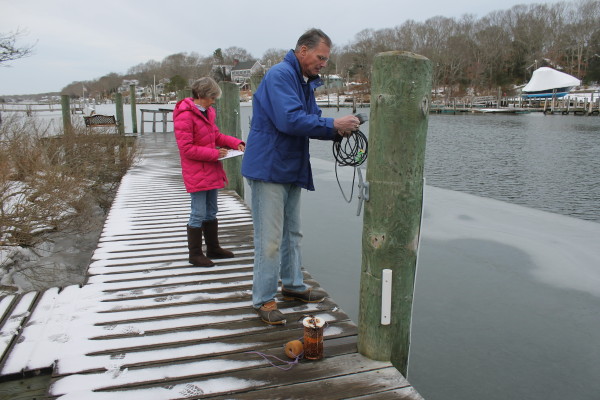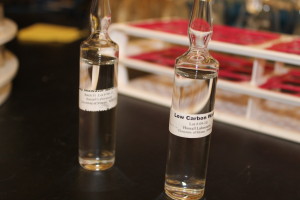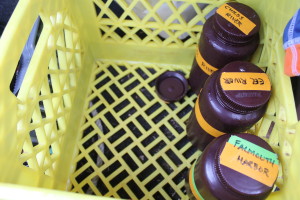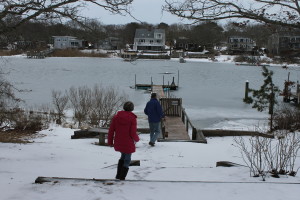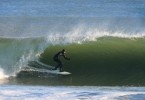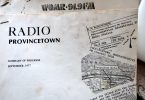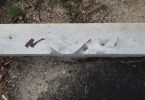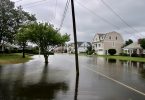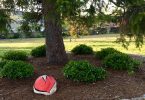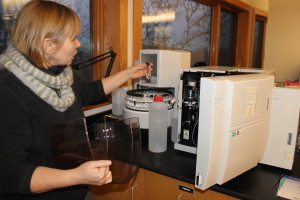
Kate Bulygina at Woods Hole Research Center uses a highly sophisticated piece of equipment, the Shimadzu TOC-V, to test quality samples taken by the Pond Watch volunteers.
FALMOUTH – The Shimadzu TOC-V in the environmental chemistry lab of Ekaterina (Kate) Bulygina, research associate at Woods Hole Research Center, may look to the uneducated eye like a mini-fridge attached to a computer, but this highly sophisticated device could provide crucial data that could help in decisions on wastewater treatment and disposal going on now in Falmouth.
“This is the most crazy, most beautiful instrument to me,” said Bulygina, 49, who moved from Russia to the United States with her family in 1995 and has worked at the Woods Hole Research Center for nine years.
Decisions such as which neighborhoods to sewer and how to dispose of the wastewater are expected to cost Falmouth’s taxpayer’s hundreds of millions of dollars in the coming years.
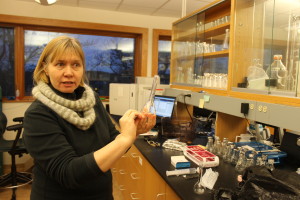
Kate Bulygina, research associate at Woods Hole Research Center, explains the new protocols for testing water samples from Falmouth’s coastal ponds.
A device like the Shimadzu can not only provide baseline data as the town embarks on wastewater treatment measures, but it can also add to the quality of the data.
The Japanese-made $50,000 machine is being used by the nonprofit group Falmouth Associations Concerned with Estuaries and Saltponds (FACES) to test for nitrogen and carbon in the town’s estuaries through the organization’s Pond Watch Program.
The Pond Watch Program, begun by FACES in May 2006, is a volunteer-staffed program of collecting and reporting water quality data.
From the beginning, the Pondwatchers have tested samples for water temperature, salinity, dissolved oxygen and water clarity, basically the cleanliness of the water.
But now, thanks to the Bulygina’s volunteer hours and her use of the Shimadzu, the water will also be tested for dissolved nitrogen and carbon. Though it ressembles a mini-fridge, the gas-powered device is actually more like an oven. It heats the samples to 700 degrees celsius, essentially burning them to measure the carbon and nitrogen in the sample.
The information collected by the Pondwatchers is important because as the town embarks on wastewater planning estimated to cost in the hundreds of millions of dollars, how much nitrogen is in the water and where it comes from could prove critical to the decision makers.
Falmouth’s estuaries have been damaged mainly by nitrogen pollution that travels through groundwater from the septic systems of homes built near the coast over the past several decades. Title V septic systems, which are required in Massachusetts, do not remove nitrogen from wastewater. When nitrogen, traveling through groundwater, reaches the coastal ponds, it causes overproduction of algae, which uses up oxygen in the water resulting in fish kills.
According to Cheryl Holdren, board member for FACES, that difference in protocol for how the samples are tested will add greatly to the town’s information at a critical time of decision-making.
Bulygina said the information will be important in creating an accurate baseline for how the water quality is now, before any sewering happens. “The data will be more meaningful,” she said.
Where The Testing Begins—Early Morning Pondside
None of this could be possible without the work of volunteer Pondwatchers like Doc Taylor and Mimi Gregory who approach their roles collecting data at the water’s edge with studious attention.
On a recent brisk January morning, as they have been doing for seven or eight years, Taylor and Gregory, begin at 7 a.m. not long after sunrise gathering water samples from four of Falmouth’s coastal embayments, Childs River, Eel River, Green Pond and Falmouth Harbor.
Taylor, 66, has been a Pondwatcher since 2005. He retired to East Falmouth in 2003.
He got interested in the program when he spotted a volunteer going out during a snowstorm, climbing over snow banks at the Menauhant Yacht Club to take water samples.
As a retired meterologist interested in all things weather-related, Taylor asked the guy what he was doing and found out about the program. He soon joined up as a volunteer.
As an avid boater, he is concerned about the declining water quality int own.
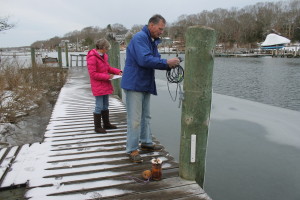
Doc Taylor and Mimi Gregory, volunteers in the Pond Watch program, take samples at Child’s River in Waquoit in Falmouth.
“The health of the estuaries is all gone. The water’s all dirty in the summertime,” he said.
Gregory, who turns 72 next month, started “pondwatching” in 2006 soon after she retired to East Falmouth, having been roped in by her friend Doc Taylor.
The two first met when they were kids summering in Menauhant.
“I used to babysit for him,” Gregory said.
Gregory, also an avid boater, agreed that the water quality has gone way down from when they were children.
“’Course, we remember growing up that whole pond was full of eel grass, scallops, blue crabs and that’s all gone. The habitat is not there,” she said.
She said she enjoys the process of water testing because it brings her back to those youthful summer days.
“It’s like we’re playing in our own backyard,” Gregory said.
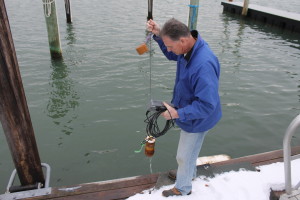
Doc Taylor pulls a canister out of Falmouth Inner Harbor, taking surface water to test as part of the Pond Watch program.
Taking samples at Eel River in winter, sometimes they have to break through ice to take the surface water samples.
Taylor said that the water quality in the summer is heavily degraded.
“In the summer time here, there’s so much horrible weeds and stuff, you can’t see the bottom,” he said.
“So much algae, it’s horrible,” Gregory said.
Taylor and Gregory can see that the estuary is damaged, but as to exactly how damaged it is, how much total nitrogen is in the water, that calculation will be determined in Bulygina’s lab through the 700 degree heating process of the Shimadzu.
– Laura M. Reckford
To volunteer to be part of the Pond Watch Team in Falmouth, contact FACES at [email protected].

